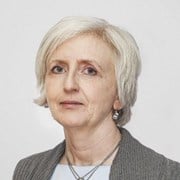Stringent energy efficiency requirements in the building sector mean that we are installing more insulation than ever before. Every year we manufacture and import tens of thousands of tonnes of plastic pellets for the production of insulation materials. At the same time, we are sending volumes of insulation materials equivalent to one third of what we actually use to landfill and combustion plants.
Facts about polystyrene:
- Expanded polystyrene (EPS), also known as ‘white cork’, has many applications, including as building insulation. It contains 98% air and thus has a very low density and excellent insulation properties. It also exhibits low humidity absorption, high compressive strength and is extremely durable.
- More than half of all EPS that is manufactured is used in the building industry, and material from this source also accounts for more than half of all EPS waste.
- In 2020, Norway produced a total of 70,000 tonnes of plastic pellets for insulation materials, and imported about 9,000 tonnes. In the same year, we generated 30,550 tonnes of EPS waste. It is estimated that half of this waste was sent to combustion plants, and the other half to landfill.
- Source: The Norwegian Environment Agency: https://www.miljodirektoratet.no/publikasjoner/2022/januar/reduced-littering-from-expanded-plastics-mapping-and-evaluation-of-measures/ (in Norwegian).
“In order to prevent so much plastic waste ending up in landfill or combustion ovens, we need to develop new systems for waste sorting and disposal, as well as for the reuse and recycling of building materials. This will benefit both the industry and the environment”, says researcher Birgit Risholt.
Risholt is a Senior Research Scientist at SINTEF and is heading the project ‘Sirkulær EPS’ (Circular EPS), which aims to recycle EPS insulation materials from the building and construction industry. The establishment of a so-called ‘circular economic value chain’ will improve access to insulation materials and reduce the need for the expensive disposal of demolition waste.
The aim is to adapt materials reuse and recycling to future needs. The work is being carried out in collaboration with the building industry.
“It will also result in the better management of natural resources, less environmental damage and lower greenhouse gas emissions”, says Risholt.
Polystyrene is well suited for recycling
Globally, the demand for polystyrene in buildings is on the increase, not least because of energy efficiency requirements. In essence, polystyrene is made of entirely recyclable materials and is thus very well suited for reuse. In many situations, the plastic insulation installed in a building has a longer lifetime than the building itself. It should thus be possible either to recycle non-contaminated polystyrene immediately for new insulation applications, or to grind it up for use in new products, or recycled as a fresh raw material.

Used expanded polystyrene (EPS) can be recovered from buildings throughout Norway. It takes up a lot of space and is thus expensive to transport. Used EPS may also be contaminated with dirt or chemicals. Stock photo: iStock
“As part of this project, we’ll be analysing used EPS and identifying methods of recycling that ensure circular and sustainable resource use”, says Risholt.
The entire industry has to get behind this approach
The Project Owner is the company BEWI (formerly Jackon), which supplies construction systems and insulation materials to the building and construction industry. It is now looking to take the lead in the use of recycled materials. BEWI’s objective is to use as much as 50 per cent recirculated raw materials in its future manufacture of EPS, which is a more ambitious target than is required by current regulations. In order to achieve this goal, the company will have to get access to large volumes of EPS waste from the construction sector, both from new-build projects and demolitions.
At present, used EPS can be recovered from buildings throughout Norway. It takes up a lot of space and is thus expensive to transport. Used EPS may also be contaminated with dirt or chemicals. For these reasons, a logistical system is needed to compress used EPS to make it ready for transport, as well as a method for separating and removing contaminating substances.
“We’re very pleased to have companies such as Optimera and Franzefoss Gjenvinning on our team during this project. Together, we’ll succeed in finding a logistical solution”, says Tone-Cecilie Lie, who is Senior Sustainability Manager at BEWI. “But in order for us to get hold of sufficient used EPS, the entire value chain will have to get behind the new approach. We can never have enough partners”, she says.
Assessing the potential for reuse
SINTEF is acting as Project Coordinator and research partner during this project. Its role is to make an assessment of existing building stock in order to find out how much EPS there is and what is the potential for its reuse. It is also important to find out if the materials can be reused in their current form, or if they have to be processed in some way – because not everything can be recycled.
Facts about the project:
- Plastic recycling is a political objective, and the control of material flows is crucial to its success. Thus, the aim of the project ‘Sirkulær EPS’ (Circular EPS) is to contribute towards establishing a circular value chain for expanded polystyrene (EPS).
- The project partners BEWI, Optimera, Franzefoss Gjenvinning and SINTEF will be working together to develop new services for waste management, sorting, transport and materials control, as well as creating a construction system and technical building solutions for EPS and XPS (extruded polystyrene) that are adapted to the targeted reuse and recycling of these materials.
- The aim of the project is to enable collaboration along the entire value chain and among all the various sectors involved.
- The project ‘Sirkulær EPS’ is an IPN (Innovation for Business) project and is being funded by the Research Council of Norway, BEWI and the project's commercial partners.
Visit the project website at: https://www.sintef.no/prosjekter/2023/sirkular-eps/
“Before we can reuse EPS that is recovered from demolished buildings, we have to make sure that it doesn’t contain any harmful substances”, says Risholt. “For example, we know that some EPS used in the 1980s contains brominated flame retardants. It will not be possible to reuse this kind of material in new buildings”, she says.
SINTEF will be testing a variety of technical building solutions involving recycled EPS in its laboratories. Researchers will also be looking into costs, market scenarios and the need to adapt the regulatory framework in order to make recycling and the trade in such materials easier.
Looking for EPS from demolition projects
BEWI’s factory in Fredrikstad in south-eastern Norway has already initiated the test manufacture of EPS using recycled raw materials. When the project partners met at the beginning of June, they were able to pool their experience as a basis for preparing plans for their future research activities.
“We’re going to need a great deal of used EPS from demolition projects, so if you’re looking to renovate a large roof or demolish a building that has EPS in its construction, don’t hesitate to get in touch with us”, says Birgit Risholt.


